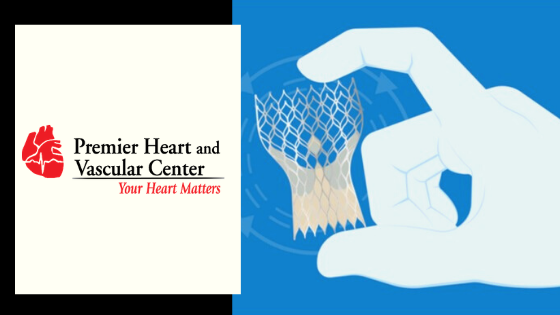By Rajesh Lall, MD, FACC
Premier Heart and Vascular Center, South Lakeland
When you are diagnosed with severe aortic stenosis, the most common alternative and less invasive procedure that may be suggested to you is the TAVR procedure. Transcatheter Aortic Valve Replacement (TAVR) is also known as TAVI, which is an acronym for Transcatheter Aortic Valve Implantation. The procedure replaces the aortic valve affected by the disease in a less invasive way, which means you can get back to your regular self more quickly.
What Does TAVR Treat?
TAVR treats severe cases of aortic valve stenosis, one of the most common and most dangerous heart valve issues because it narrows the aortic valve and restricts proper blood flow.
The symptoms of aortic valve stenosis are:
- Chest pain
- Breathlessness or fatigue
- Fainting
- Palpitations or very heavy heartbeats
- Heart murmur
- Low ability to perform any activity that requires mild exertion
In more severe cases, aortic valve stenosis can also cause heart failure and sudden cardiac death.
How Is the TAVR Procedure Performed?
The TAVR procedure replaces the aortic valve when it’s affected by severe aortic stenosis, meaning your aortic valve is narrowed and unable to open correctly.
Because it’s performed while the heart is still beating, TAVR is only used for patients considered to be at intermediate or high risk of surgery complications or not candidates for open-heart surgery. A multidisciplinary group consisting of cardiologists, surgeons, and other medical professionals determines whether or not the patient is a good fit for this treatment.
Before the procedure starts, you will most likely receive medication that reduces the risk of infection and general anesthesia. During this minimally invasive procedure, a stent tissue valve is attached to a balloon catheter, which is inserted through a small incision in the groin. Your cardiac surgeon will insert the catheter directly into your artery and guide it to the heart. The catheter will push aside the old valve and your surgeon will add the new one in its place. Throughout the procedure, an entire team of specialists will monitor your heart rhythm and its overall function to ensure that everything is going according to plan.
Once the procedure is done, you can expect to spend a night in intensive care and some two to five days in total recovering in the institution.
You will need to use blood-thinning medication for a while after the procedure, and your doctor will likely recommend some other medicines as well, usually for preventing infections.
If you are interested in the procedure and want to know more, feel free to contact us.



